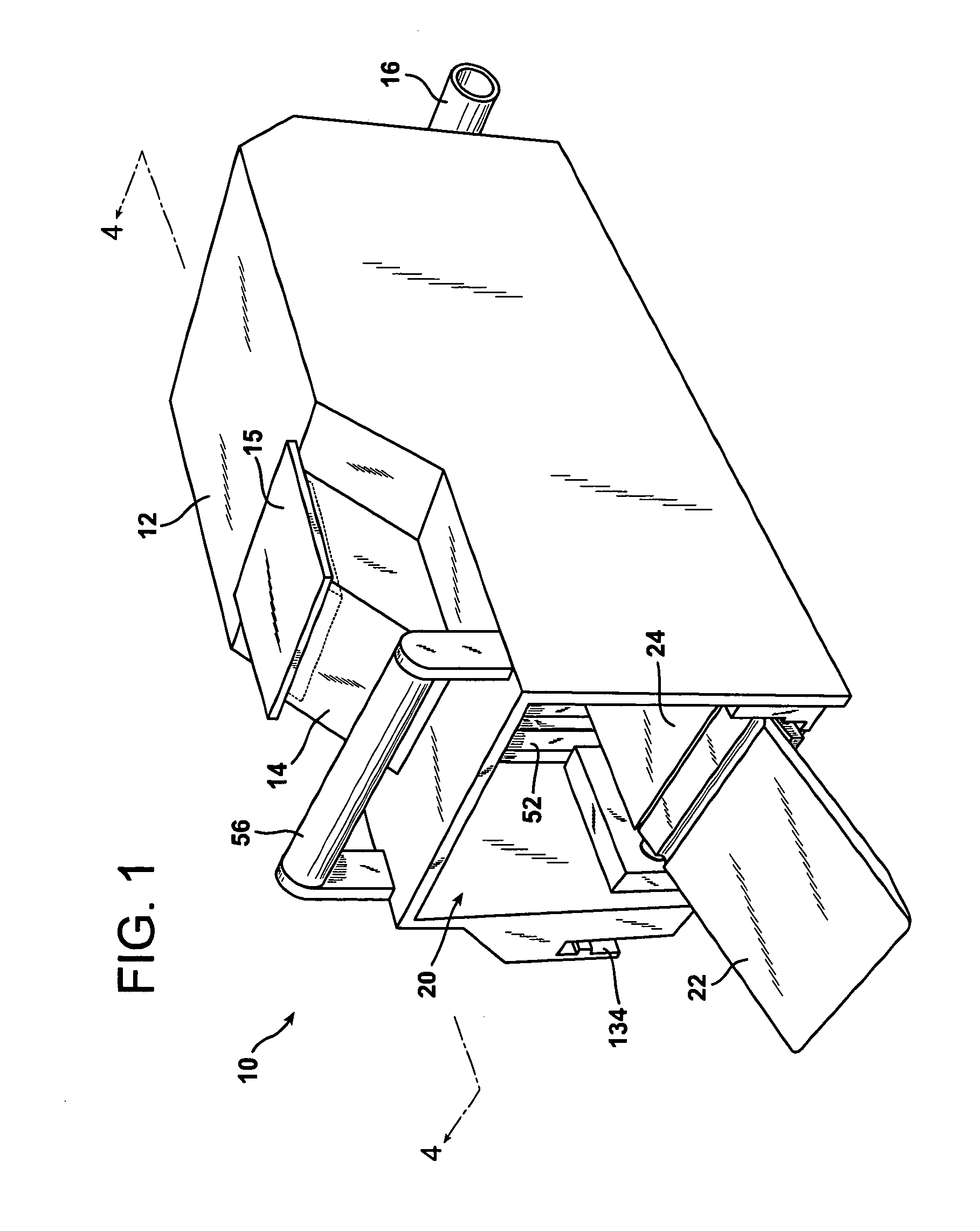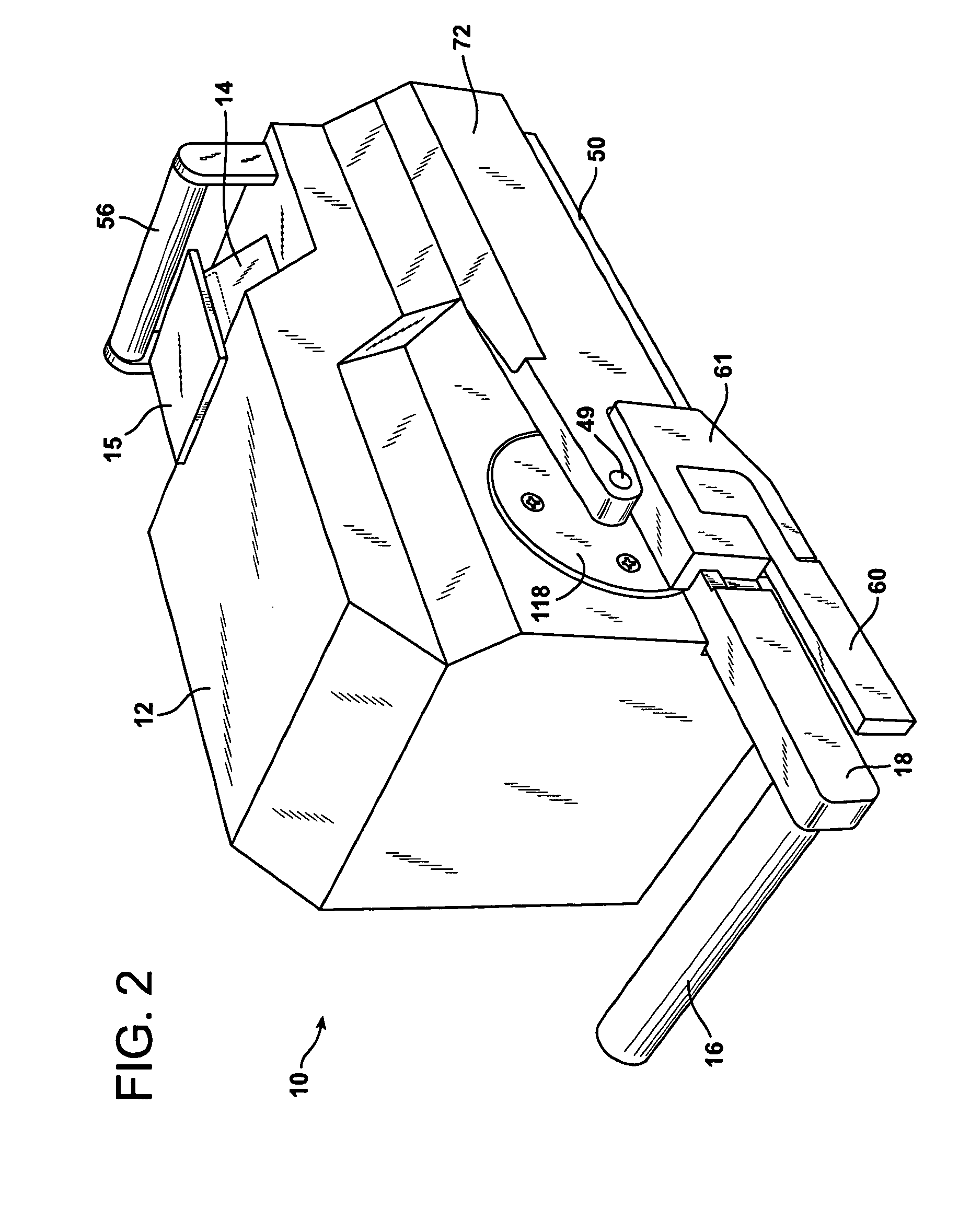Animal trap
- Summary
- Abstract
- Description
- Claims
- Application Information
AI Technical Summary
Benefits of technology
Problems solved by technology
Method used
Image
Examples
Embodiment Construction
[0095]The illustrated animal trap, is designed primarily for trapping rodents such as rats or mice, however it may be used for fur-bearing animals or other pests that can be attracted into the trap. In its preferred and illustrated use it is designed to eliminate rats.
[0096]Referring to the Figures, in particular FIGS. 1 and 2, the animal trap of this invention 10 includes an enclosure 12. The enclosure 12 has one portion opened 20 for entrance of an animal 128 (see, for example FIGS. 4 and 5) into the trap 10. The remaining portions of the enclosure 12 cover the trap mechanism and “kill area” and form a substantially complete enclosure therefore except for openings therein that cooperatively function with the trap mechanisms, openings that contribute to the functionality of the trap (see, for example FIGS. 3 and 4) or incidental openings that do not interfere with the function and benefits of the trap 10 of this invention.
[0097]The enclosure 12, as depicted in substantially all the...
PUM
 Login to View More
Login to View More Abstract
Description
Claims
Application Information
 Login to View More
Login to View More - R&D
- Intellectual Property
- Life Sciences
- Materials
- Tech Scout
- Unparalleled Data Quality
- Higher Quality Content
- 60% Fewer Hallucinations
Browse by: Latest US Patents, China's latest patents, Technical Efficacy Thesaurus, Application Domain, Technology Topic, Popular Technical Reports.
© 2025 PatSnap. All rights reserved.Legal|Privacy policy|Modern Slavery Act Transparency Statement|Sitemap|About US| Contact US: help@patsnap.com



